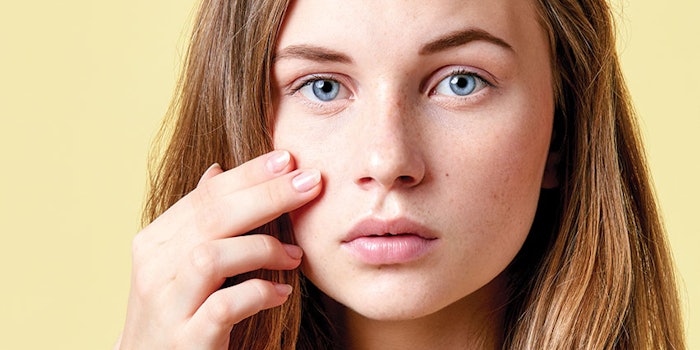
Read the full article in the January 2021 digital edition. . .
The Skin, the Brain and the Invisible,” was the title of a seminal paper demonstrating a more than skin-deep connection of these two organs.1 The skin is the visible envelope of the human body, playing a key role in perceived attractiveness and denoting cues about a person’s health, age and background. When looking at facial skin in the mirror, we experience a self-judgment of our attractiveness—leading to positive or negative emotions. It is our own judgment as well as the mirroring of our peer group, friends and family that matters the most.
The skin and brain have a close bidirectional anatomical and functional connection, yet the brain has only recently been demystified by functional magnetic resonance imaging (fMRI), a technique that allows indirect visualization of its activity. Research has mainly focused on the experimental itch-scratch cycle to describe the brain structures involved in itch processing and the regulation of the scratch response on contagious itch and its suppression.1 The itching and burning sensations without a visual and objective sign of irritation are what defines a sensitive skin type. Also, the neural basis of self-perceived sensitive skin, prevalent in more than 50% of the female population—and often questionable due to a lack of understanding of the specific physiological pattern—has been objectively confirmed by fMRI. Research has shown that compared with controls, people with self-perceived sensitive skin have a specific cerebral activation during skin irritation challenge.2
Excessive Grooming Patterns
The brain has been wired to focus on imperfections to ward off infection and find a healthy partner, thus humans pay attention to clinical signs of aging and disease in oneself and others. Grooming the skin may reward us with pleasure or, if excessive with scratching, picking and removing skin irregularities, it can inflict repetitive skin damage. Both visual skin irregularities such as bumps and pimples and the sensation of itching can elicit excessive grooming patterns.
In relation, itch is a symptom of skin irritation or infection. This is an evolution-based behavioral strategy that arose in our ancestors to reduce infectious risk by excessive hygiene with cleaning, washing and scratching to remove skin pathogens. The urge to remove both visual and sensory cues triggers scratching and cleaning and, as a response, is very powerful—the degree of this response is linked to one’s own perceived vulnerability. It is a health-protecting behavior and invites disgust-related rejection, distancing and avoidance in others.
The role of neurotransmitters in excessive grooming is likely. Serotonin dysregulation may play a role in excessive cleaning, washing and skin picking while dopamine agonists can reduce excessive grooming. In contrast, oxytocin may entice more grooming, suggesting it serves a purpose in enhancing bonding and establishing, as well as maintaining, social relationships.3
In patients that pick skin excessively, fMRI scans of the brain show there is greater activation in the left insula and amygdala, and stronger insula-putamen coupling. Disgust feelings elicited by seeing skin irregularities on the screen relate to the activation of these brain areas. The insula holds a representation of disgust observation, experience and imagination and is involved in the perception of bodily experiences, such as touch and itch. Both areas play a role in the urge to scratch and the subsequent relief is derived from scratching.
People who repeatedly pick and scratch their own skin may have an oversensitive (disgust-driven) behavioral immune system and difficulties in regulating their emotions when experiencing negative emotional states. They self-soothe with picking, which provides relief.4
. . .Read more in the January 2021 digital edition. . .
References
- Mueller, S.M., et al. (Jan 21, 2017). Functional magnetic resonance imaging in dermatology: The skin, the brain and the invisible. Experi Dermatol 26(10) 845–853. Available at: https://doi.org/10.1111/exd.13305
- Querleux, B., et al. (Oct 10, 2008). Neural basis of sensitive skin: an fMRI study. Skin Res & Tech 14(4) 454-461. Available at: https://doi.org/10.1111/j.1600-0846.2008.00312.x
- Feusner, J.D., Hembacher, E. and Phillips, K.A. (2009). The mouse who couldn’t stop washing: pathologic grooming in animals and humans. CNS Spectrums 14(9) 503-513. Available at: https://doi.org/10.1017/s1092852900023567
- Schienle, A., Übel, S. and Wabnegger, A. (2018). Visual symptom provocation in skin picking disorder: an fMRI study. Brain Imaging and Behavior 12(5) 1504-1512. Available at: https://doi.org/10.1007/s11682-017-9792-x








